For field labourers, having working leather gloves on hand becomes a necessity. Because of this, men tend to find the item to be highly appealing. Leather gloves, however, are rather well known when it comes to men’s fashion, so their use is not limited to the workplace. In other words, there are a variety of reasons why people—especially men—need work gloves, even though women can occasionally wear the same item. One issue is that not everyone is aware of how to buy and maintain a pair of high-quality leather gloves. They only know to make purchases that fall within their means. It is not totally accurate, but there are also a number of additional requirements. If you fall into this category, read on for some crucial factors you should take into account before making a purchase.
10. How to Clean Leather Gloves?/ How to Wash Leather Gloves?
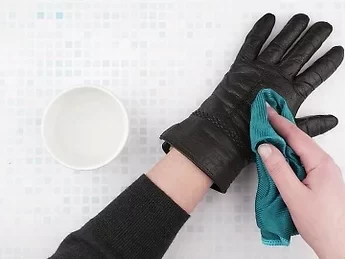
Exterior Glove Cleaning
It’s essential to use mild soap without any chemical agents before washing your gloves. These will remove the leather’s natural oils, making the gloves unpleasant and rigid. Additionally, eliminating the oils drastically reduces their lives prematurely. Make sure you have mild soap on your hands, such as saddle soap or Marseille soap.
- Use a mix of white vinegar and water (equal parts of each) to clean any stains off your gloves. To achieve this, coat your gloves with a cotton ball dipped in the solution. Dab the solution off with a delicate microfiber cloth, then leave them to dry.
- Apply your selected soap to a damp towel and lather your leather gloves, being sure to get soap between the fingers. Then, totally remove the soap by wiping it off with a clean, damp microfiber cloth. The leather should get a great gloss with this microfiber cloth as well.
- While waiting for your gloves to dry, pull them on a few times to let the leather expand and regain its natural shape. Avoid attempting to dry them outside or in the sun. Wet leather may stiffen and become brittle if it dries too soon.
Interior Glove Cleaning
Wool, silk, and cashmere are all suitable fabrics for lining leather gloves. Cleaning the interior of your gloves is challenging because leather cannot be completely soaked. If you need to clean the lining right away and can’t wait to hire a pro, try the following:
- Make the interior of your gloves visible by turning them inside out.
- Spray the lining with a mixture of white vinegar and water in an equal ratio (but keep in mind to not soak the material).
- After 20 minutes, let the solution sit before patting it dry.
- Dry the lining entirely in a cool, well-ventilated area. Do not try to dry them yourself or expose them to the sunshine.
- To help them regain their natural shape, flip them over and pull them on. Smooth out any visible creases in the outer leather before applying a leather conditioner.
9. How to Dry Leather Gloves?
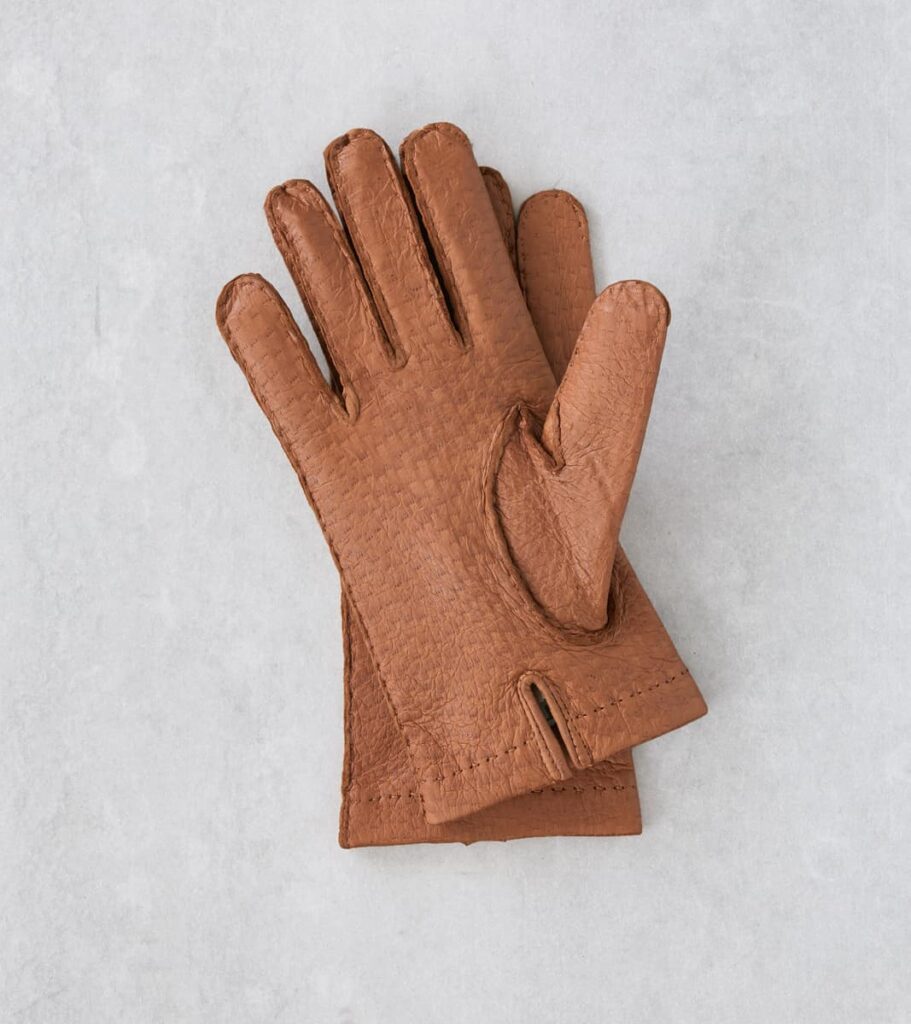
Leather gloves and mittens cannot be dried in a clothes dryer, thus drying them requires patience. In fact, attempting to hasten the drying process by using a hair dryer or putting your leather handbags in the dryer could potentially harm the leather and lessen its longevity. Dry your leather gloves upright after removing the liners. A clean towel should be placed over your wet gloves, and it should be pressed down to let the towel absorb as much moisture as possible. Then repeat while turning the gloves inside out.
Leather gloves should be hung in a well-ventilated area and allowed to dry naturally. No external heat source should be used. Pull them a little to make the folds less creased as they dry. You can also put them on and repeatedly extend your fingers. Avoid leaving your gloves outside for too long because the leather will dry out and become harder. You can hang them from a clothesline or use a bottle to support them while you do this. Before wearing them, let them totally dry out. It should be noted that waterproofing can be applied while the gloves are still wet.
8. How to Waterproof Leather Gloves?
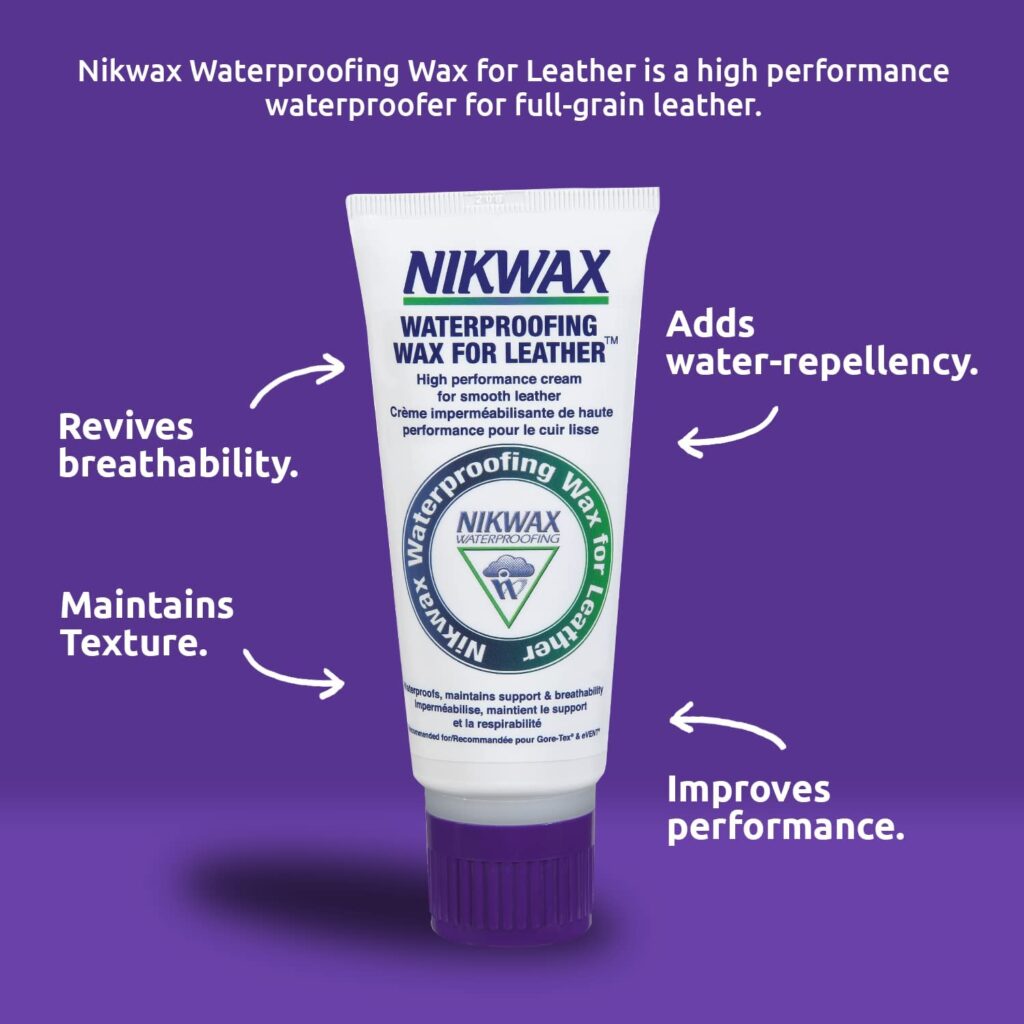
Applying a waterproofing finish to your gloves once they are clean and (almost) dry will help to preserve the leather and enhance performance. Even though it’s not required, we normally advise it as a best practise for optimum performance.
- Waterproofing Wax for leather, which offers a DWR (durable water repellency) coating immediately, is what we advise.
- Put the wax on. Put a generous drop of waterproofing wax on the glove’s palm (you can always add more if you need to).
- Put on the gloves, then rub the wax in. To rub the waterproofing wax into the leather, mash your hands together as if you were washing them in a sink. Apply wax to the leather in even strokes using slow, steady motions. Use your fingers to press the wax into the glove seams.
- Remove any extra wax by wiping. After allowing the wax to absorb for 15 to 20 minutes, remove any noticeable excess wax with a moist cloth.
- Before using, let your gloves completely air dry.
7. How to Condition Leather Gloves?

We want to make sure that you can keep your leather gloves clean and in good condition for as long as possible once they are cleaned and ready to use. Your leather gloves will avoid any creases that may have developed during the washing procedure if you moisturise them. To remove the creases, simply wipe your gloves in a circular manner while applying leather conditioner like Leather Honey Leather Conditioner. To apply the conditioner properly, use a fresh microfiber cloth or a soft sponge. This step is crucial to extending the life of your leather gloves even if no wrinkles developed during the washing procedure.
6. How to Stretch Leather Gloves?
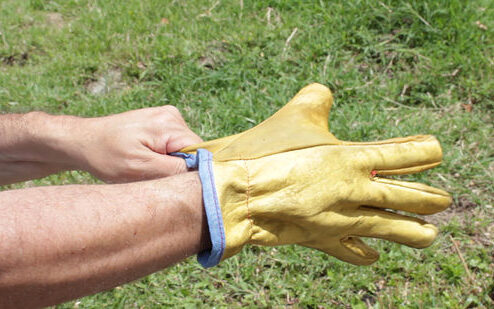
You might benefit from stretching out your gloves a little if they don’t fit just right or could use a little extra pliability. You can stretch each finger separately while doing this by placing them on the edge of a table. To avoid damaging or even tearing the gloves, be sure to do this lightly. Stretching your leather gloves occasionally will preserve them from tearing, deforming, losing their shape, and, of course, will keep them looking priceless. You can also stretch out your gloves by applying a natural lubricant. We advise purchasing two or three pairs of leather gloves if you intend to wear a pair frequently throughout the course of the year. In addition to avoiding normal wear and tear considerably quicker, this will give each pair.
5. How to Shrink Leather Gloves?
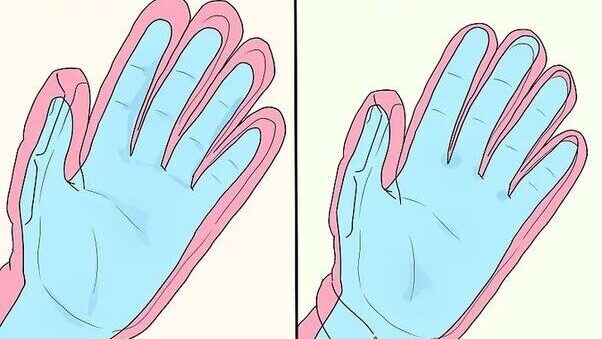
Given their high cost, leather gloves should be used as frequently as possible. But it can be uncomfortable to wear gloves that are overly large. You can make an old pair of shoes that you’ve been willing to size down fit you by shrinking them. Simply condition the leather gloves to make them as soft and supple as a brand-new pair after shrinking them for a more comfortable fit. You’ll be wearing your leather gloves in no time if you follow these simple instructions.
- On the stove, heat water in a pot until it begins to boil. After removing the water from the heat, give it about five minutes to cool.
- The gloves should be thoroughly submerged after being dipped in the hot water. Lay the gloves flat in a stable place after removing them from the water.
- Connect the hair dryer, then use the hottest setting to cover the gloves. Go on until the gloves are completely dry.
- To determine if the gloves are now the correct size, try them on. Once they are appropriately adjusted, soften the leather with mink oil or leather conditioner to prevent the hot water from leaving the gloves feeling too stiff.
4. How to Break In Leather Gloves?
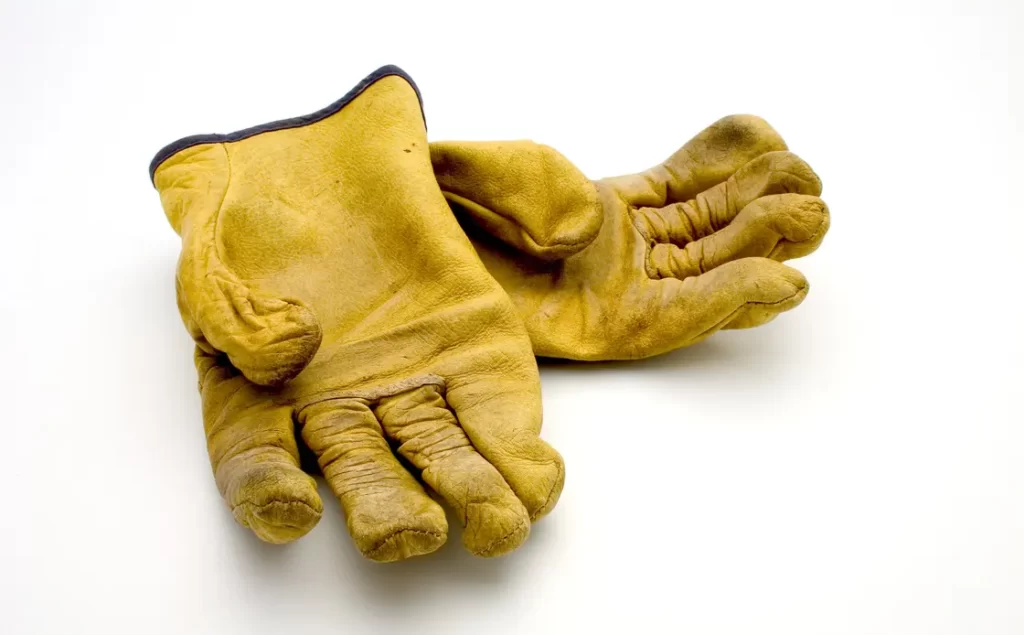
On construction projects, leather work gloves are a tried-and-true material. The material is made from animal skin and is only slightly waterproof. Leather work gloves need specific care and routine upkeep to preserve these qualities. Before using them on the construction site, you should break in your new leather gloves because they can seem clumpy and stiff. Using leather oil, a conditioning agent that prevents the material from tearing apart, is the ideal way to break in leather work gloves. Leather oil is an oil and wax mixture that can be either natural or synthetic. Waterproofing is one of the advantages of breaking in work gloves with leather oil. Leather oil has waterproofing qualities. It makes sense to use this strategy if you work on a building site that is wet or damp. When adding leather oil to your gloves, follow these instructions:
- Apply a thin layer of coating to the glove’s surface using a sturdy brush or thick cloth.
- Dry the glove for a few hours to allow it to absorb the coating completely.
- Every 3 to 6 months, apply a fresh coating (depending on use).
3. Choose the Correct Glove Sizes

Purchasing a pair of gloves can be challenging, just like purchasing any other article of clothing. It’s because the things come in a wide range of sizes, and choosing the ones with the appropriate sizes necessitates careful consideration. Keep in mind that purchasing the incorrect sizes will not assist you at all. Instead, wearing it is likely to make you uncomfortable. Things will be considerably more challenging if they are work gloves. Therefore, asking about the appropriate sizes will ultimately benefit you. To avoid buying the incorrect products, don’t be hesitant to try them on before you make a purchase. Before you buy a pair of leather gloves, use the following instructions to determine what size gloves you wear. To get the circumference of your hand, first, wrap a measuring tape around the broadest area of your palm (excluding the thumb):
Men’s Gloves Size
21 cm is size 7.5 (7.5 inches)
22 cm is size 8 (8 inches)
23 cm is size 8.5 (8.5 inches)
24 cm is size 9 (9 inches)
26 cm is size 9.5 (9.5 inches)
Women’s Gloves Size
17 cm is size 6.5 (6.5 inches)
19 cm is size 7 (7 inches)
21 cm is size 7.5 (7.5 inches)
22 cm is size 8 (8 inches)
2. Leather Glove Linings
The convenience of your hands and fingers depends on selecting the right glove liner. Linings are initially sewn as an entirely separate glove, then they are put into the leather glove shell to guarantee a flawless fit. The most well-liked glove linings for leather are:
| Cashmere | The most luxurious and soft option is cashmere lining. Despite their stylish design, these gloves are surprisingly warm because of the great insulating qualities of cashmere. No matter how long you wear them, your hands will feel wonderful because it is airy and extraordinarily soft. In terms of dress gloves, this is our top pick. |
| Wool | Although slightly heavier than cashmere and more robust, wool linings are frequently quite elegant. Although slightly less cozy and soft than cashmere, a thin wool lining will still be incredibly soft and cozy. |
| Shearling | The warmest option is fur or shearling lining, but it is also the bulkiest. If you live in a colder region, your best option for daily use is a glove with a shearling inside. |
1. Quality of Gloves
Premium leather is a material that never goes out of style and ages beautifully. A pair of leather gloves, which are naturally soft and sturdy, is a classic wardrobe necessity that will bring pleasure for many years to come. But not all leather is created equal. Some leathers are stronger and more elastic. Others offer a brilliant sheen or greater warmth. Which leather is best depends on the type of glove. The best leathers to seek are those made from the peccary, hair sheep, deerskin, or Napa.
| Hairsheep Leather | The sheep used to produce wool are not the same as hair sheep. The leather is considerably softer and lighter than typical sheepskin, and they have longer hair. Due to its extremely high tensile strength, hairsheep leather is more resistant to stretching and movement. Its smooth and glossy texture gives it a sleek, elegant appearance. |
| Deerskin Leather | Deerskin leather is renowned for combining strength and suppleness. It features a pebbled grain and is one of the strongest glove leathers on the market. Deerskin, which is comparable to elkskin in appearance, is typically a little thicker and more rugged-looking than other varieties of leather, making these an excellent choice for the colder winter days. |
| Peccary Leather | When it comes to glove leather, Peccary is the best. The hides of peccaries, which are endemic to the Amazon, combine the greatest qualities of all other types of leather. Peccary leather is incredibly soft, flexible, warm, and long-lasting. If you are extremely rough on your gloves and rip a seam, it is a simple remedy because it can be repaired numerous times. |
Final Thoughts
One item you’ll never regret owning is a good pair of leather gloves. Similar to how you wouldn’t want to attend a formal occasion wearing a worn-out parka, you wouldn’t want to wear a pair of bulky Thinsulate gloves. Listed above are a few things to think about when searching for premium leather gloves. We also asked the professionals for advice on how to take care of them. If you adore leather gloves, we hope that these crucial aspects will be helpful to you.

